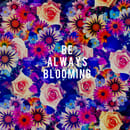Disclaimer: This article discusses eating disorders, body dysmorphia, and related conditions.
This article is the first of a three-part series.
Lately, I’ve been trying to live more boldly. This applies to several areas, and the more I think about how far I’ve come, the more I realize how much work I have yet to do. A large part of that is viewing myself as less of a helpless victim of circumstance and taking ownership of myself instead.
I’ve devised this as a three-part series, exploring the things that scare me and surprise me and empower me at the same time. And to start, I’ll be covering the one that scares me the most.
For years, I’ve struggled with consistent body dysmorphia and on-and-off eating disorders.
Looking at me, you wouldn’t think it—I’m 5’3”, pear-shaped, and usually wear a size 6. I’m actually quite passionate about cooking, and I’m a stress-eater and a study-snacker. Even at my physical worst, I was never actually underweight, despite having lost 30 pounds in the span of 4 months—at the age of 13. Taking these factors and others into account, I never feel comfortable sharing this part of my history with anyone, and not being the “textbook” image of someone with an eating disorder, I seldom feel validated in even admitting that it’s a legitimate problem.
Eating disorders and body image issues, to a greater extent than a lot of mental illnesses, are frequently misrepresented and rarely discussed in earnesty. Our society has come a long way in normalizing discussion of mental illness, as well as trying to spread acceptance through platforms such as the #bodyposi movement. But real, honest discussion about real issues? Suddenly it becomes taboo. When I see characters in movies talking about disordered eating, it’s usually a shallow, superficial character making side remarks about going on a diet or purging their food to lose weight. You never see the picture of someone curled on on the bathroom floor, breathing heavily and tugging at their hair because they overate at a New Year’s dinner. This misrepresentation in media makes me feel like it’s my fault for having this problem, like if I weren’t so vain and image-obsessed, it wouldn’t bother me.
But that’s so far from the truth. The superficial aspect of these kinds of issues has very little to do with their root cause. Like any mental illness, the fact that someone would be driven to certain self-destructive behaviors is indicative of a real internal problem, and they need to be discussed more openly so as to transcend the stigma attached.
I don’t exactly remember when it all started for me. I think I was about 10 years old when I was first told that I was “a little chubby” and should “eat less.” When I was 12 and entering middle school (you know this isn’t going to end well), I became painfully aware that I wasn’t one of those girls that the boys always wanted to flirt with, and that I was filling out a little too much in certain areas while not enough in others. I never really felt ugly, but when I was struggling socially, I thought that maybe if I was prettier, people would like me, and that if I were skinny, I’d be pretty enough. So in the fall of 8th grade, I decided that the best option was to stop eating so much.
I slipped into a routine frighteningly quickly, and it became an obsession. I would have a yogurt every morning, throwing half of it away, and get a salad for lunch, of which I only ate the lettuce. Then I went home and had dinner as usual with my family—unless they weren’t home and I was left to my own devices. I made a habit of running up one step, down one step, up two, down two, up three, down three, and so on until I had covered the entire staircase, starting from the top and the bottom, as my default calorie-burning exercise. I ate enough in front of others for it not to be suspicious, and most people congratulated me on “being healthy” and “looking great,” viewing my weight loss as something positive. Quite the motivation to continue.
But eventually, my plot was foiled. The messed-up part of my mind kept trying to tell me that what I was doing was good, that it was better to be skinny because being skinny was healthy. But logic won out, and I finally admitted what I’d been doing and that I wanted to stop. And I did, though I couldn’t quite bring myself to regret the pounds I had shed.
For a while, I was fine. I felt good about myself, and as a lover of fashion, I took great joy in exploring different outfit possibilities and how to create a look that was distinctly “me.” But somewhere along the way, I started noticing all the little flaws again. My thighs were much larger than I’d realized, my stomach protruded rather a lot, my jawline was round and undefined.
The thing about body dysmorphia, eating disorders, and many other conditions is that slipping back into old habits can be incredibly easy. Especially when the major problem is your brain telling you that it’s what you want. I had trained myself to see hunger as a good thing, and to check for my ribs in the mirror every time I changed. So as soon as the itch for an intervention became too strong, I had fallen right back into the cycle.
I ate smaller meals. I started running. I embraced the rumbling of my stomach as pounds falling away, and similarly focused on every inch of guilt and discomfort when I gave in and ate too much. I snuck to the drugstore and bought laxatives, and I learned how to make myself vomit. And I was good at it. Until I couldn’t handle it anymore.
Those were the two most major incidents. But they don’t encompass the everyday dilemma of what to wear to look the least fat, the anxiety that no one will like me if they don’t think I’m attractive, the paralyzing fear of overeating at pizza parties, and the subsequent secret relief when having to give up gluten and dairy gave me an excuse not to eat it at all. They don’t encompass the many brief periods when I tried to slip into old habits for a week or two, maybe three, but managed to drag myself back out. They don’t encompass the voice in my head that still visits every single day, hissing at the food on my plate and trying to make me reconsider.
More recently, I’ve had to take greater care with my body. Anyone who has read some of my other articles knows that I suffer from fibromyalgia, and more recently, a vasodepressor disorder that can make me lightheaded and nauseous, in addition to chest pain, shortness of breath, and spontaneous drops in blood pressure. In May I started a medication that expands the volume of the fluids in my blood vessels to prevent my symptoms from interfering with my daily functioning, but as a side effect, it causes bloating and weight gain. Both of these conditions can make exercise a little tricky, and while it is an essential part of managing them, it often has to be gentle, not rushed or forced, so as not to make them worse. I have to remind myself that my primary goal is to take care of my body and let it heal, not to just make it superficially appealing.
There is no “type” for people with eating disorders. There is a norm, certainly, and there is an image most people come up with when they think the words “anorexia” or “bulimia.” But it’s not the rule, and denying that my suffering is legitimate is counterproductive in getting past it. I may have curves, and I may be learning to embrace them, but I cannot any longer deny the truth and in so doing deny myself the ability to move forward. And just as there is no set type for the afflicted, there is no set type for the beautiful. I see beauty in people of all shapes and sizes, and admire the confidence of how they carry themselves, but have the most trouble transferring that love, admiration, and confidence to myself.
Everyone has the right to feel proud of their body. And the while there had been a lot of societal progress in body positivity, there still exists a belief that certain people (often including me) should slim down in order to be “sexier,” or “fitter” (read: not a second-class citizen). I don’t think it’s entirely a coincidence that at the times in life that I was thinner, people were more inclined to come up and talk to me. Pop culture pushes the notion that the best and healthiest you is a skinny one.
But you know what? I eat balanced meals with little refined sugar and lots of vegetables, I walk all the time and exercise when I can, I stretch every day, I take my supplements and medication, I make sure I’m getting enough salt and protein to keep my blood pressure up where it should be, and it makes me feel good. I don’t need to overexert myself, or limit my calories to 600 or less, or force myself to go around in a dizzy haze to be the best I can be. Ultimately, the things I am capable of in life aren’t going to come down to the way I look. They come down to the way I take care of myself. And it’s not something I should ever have to be ashamed of.
Moreover, I AM beautiful. I have a beautiful mind and a beautiful heart. I love the warm brown color of my eyes, and I love my long, wavy brown hair. I love the way my skin freckles in the sun and the little heart-shaped mole on my cheek. I am made in God’s image, and that makes me perfect. Nothing as stupid as a waistline can take that away from me.
I still love fashion, and I try now to use it not as a mask so much as a means of creative expression using my body as a medium. I go for pieces that complement my figure rather than compensate for it. And I love to play with makeup, but I don’t feel the need to hide my true face from the world. I don’t use scales anymore, and I remind myself that numbers cannot determine my value. I am so much more than my size, and it shouldn’t stop me from wearing what I want to wear, doing what I want to do, and being who I want to be.
I’m not going to lie and say that I’m over it. Maybe I never will be, not completely. But the fewer times I agonize in front of the mirror whether an outfit makes me look fat, and the more I slip something on and can honestly say to myself, “I love how I look today,” I’ll take it as progress toward owning up to the body I was given and my right to live in it as I please. This notion is part of the reminder I now have inked on my wrist (which I will be writing more about in the next segment), and my hope is that in loving myself better, I can better love the world, and let the world love me back.
Image Credit: 2, Writer’s Own



